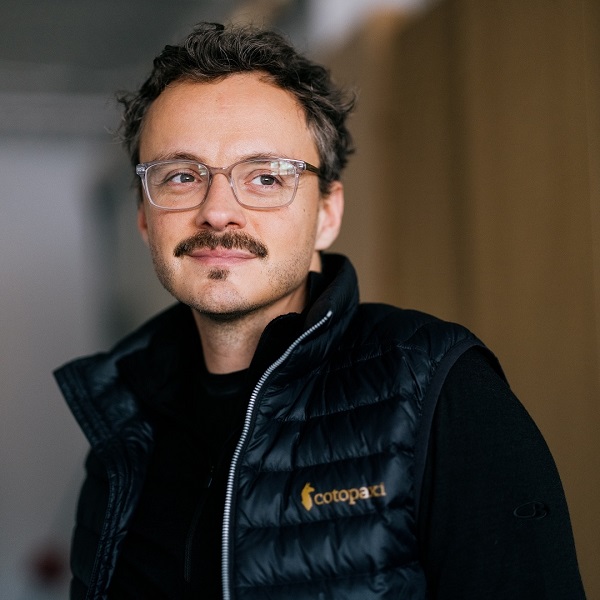Matt Dajer, BA’14, and some of his friends went online a few months ago and challenged Will Smith to bungee jump from a helicopter. That, in itself, isn’t particularly newsworthy. People routinely say all sorts of bizarre things about celebrities online.
The weird thing is that Will Smith heard about the challenge – and he said yes.
“I think that’s the biggest thing that’s happened to us,” says Dajer, one of the co-founders of the Yes Theory, a team of friends who are determined to push themselves – and everybody else – to expand their boundaries. “Our mantra now is to seek discomfort,” says Dajer.
The mantra seems to be catching on. Dajer and his Yes Theory partners (including Thomas Brag, BCom’15), regularly post videos of their adventures online to the delight of the more than 2.5 million subscribers on their YouTube channel.
Before we get to Will Smith, let’s start at the beginning.
Shortly after graduating from McGill, Dajer and Brag were living in Montreal and had recently met their future Yes Theory partners Ammar Kandil and Derin Emre.
“We had just [finished] school and we were all working in bars and hanging out with the same people all the time. We felt like we were developing a routine in our lives,” says Dajer. And not in a good way.
“Within four months, we were all feeling the same way – we weren’t creating memories for ourselves,” says Dajer. “There was rarely a moment where we thought, ‘I did that really exciting, spontaneous thing and I’m going to remember that forever.’ The only time when memories were being created was when we were out of our comfort zones or doing something new.” That realization sparked an unusual plan.
“We decided to do 30 things in 30 days that we had never done before and we were going to film a video every single day about getting out of our comfort zone,” says Dajer. “That was our first time ever being on YouTube. That’s how it all began. In a small apartment in Montreal and 30 videos.
“Every single day during those 30 days, we were learning something new. It was like a boot camp of life.”
The project slowly gained a following. Vertical Networks, a content creation studio in California, got in touch. The studio invited them to move to Venice Beach and host a show on Snapchat Discover. “That gave us eyeballs,” says Dajer. “We picked up our first 200,000 subscribers mostly through that [exposure] on Snapchat.” Once the yearlong deal came to an end, the Yes Theory team focused its attention on building up its YouTube audience. “We made a real effort to engage with our audience and put out consistent content,” says Dajer. The effort paid off.
The Yes Theory team has accompanied a daredevil helicopter pilot as he executed a series of jaw-dropping acrobatic maneuvers in mid-air. They’ve issued spur-of-the-moment invitations to complete strangers to join them on skydiving and skinny-dipping excursions. They’ve tried their hands at painting – and in trying to interest gallery owners in the results. They’ve snuck into exclusive, invitation-only Oscar parties. They’ve travelled across Europe for free, relying on the kindness of strangers they met on Tinder.
Dajer says the most unnerving thing he has done so far dates back to the team’s time in Montreal. Shortly after the terrorist attacks in Paris in 2015, Kandil, a Muslim from Egypt, posted his condolences online, adding that the terrorists were not representative of Muslims. “Somebody answered him and wrote, ‘You’re Muslim, get out of my country,’” says Dajer.
In response, Dajer (an American from New York), Brag (a Parisian) and Kandil went to the Berri-UQAM metro station. “We wore t-shirts that said, ‘I’m Matt, I’m from New York,’ ‘I’m Thomas, I’m from Paris,’ and ‘I’m Ammar, I’m a Muslim from Egypt.’ A sign in front of us said, ‘This is my roommate and my best friend’ and a sign in front of that said, ‘They cannot separate us.’ We held hands for about an hour with our heads down. I was just friggin’ terrified. I didn’t know how people would react.”
The crowds of people in the station gaped. “There was a sea of people staring, crying, taking pictures. People kept coming up to us and hugging us. It was one of those moments where your fear and anxiety [transforms into] the most rewarding and fulfilling experience.”
Dajer says the Yes Theory project isn’t just about the team members putting themselves into uncomfortable situations. It’s also about inviting other people along on that quest. “People around the world are inviting 30 strangers to a dinner party because they watched the video about [us] hosting a dinner party with strangers.”
And speaking of inviting other people to do uncomfortable things…
When the Yes Theory team learned that Will Smith was afraid of heights and that he had been challenging himself to confront that fear, they issued their helicopter bungee jump proposal to the star. Thanks to the Yes Theory’s legion of fans (who peppered Smith’s own YouTube channel with comments about the challenge), Smith learned about it and responded. In a wry YouTube video of his own, he announced he would accept the challenge to mark his 50th birthday, he would use the event to raise funds for charity and he would do it over the Grand Canyon.
The Yes Theory team had the chance to meet the actor/singer and Kandil performed the epic bungee jump too. Noting Kandil’s apprehensive expression before performing the feat, Smith quipped, “He’s looking like you want to change the name of your crew to Maybe Theory.”
“Let me tell you something,” says Dajer, “when you get some validation from Will Smith, it’s kind of like the gates of everything open up to you. It really helped put the Yes Theory brand on the map.”
Aside from their huge YouTube following, the team produces a monthly newsletter (written by Dajer) with 100,000 subscribers. They launched a line of clothes (t-shirts and baseball caps that say “Seek Discomfort”). There are sponsorship deals. There have been talks about a possible TV series.
“When we were starting out in Montreal, we were so broke that Thomas tried to buy a pack of gum with his debit card once and the transaction was denied due to lack of funds,” says Dajer. “You might not think you can make much money on YouTube, but the truth is it can be a pretty great business. Sometimes we look at the numbers and we think, ‘Can that be right? Are we really making a living doing this?’”


